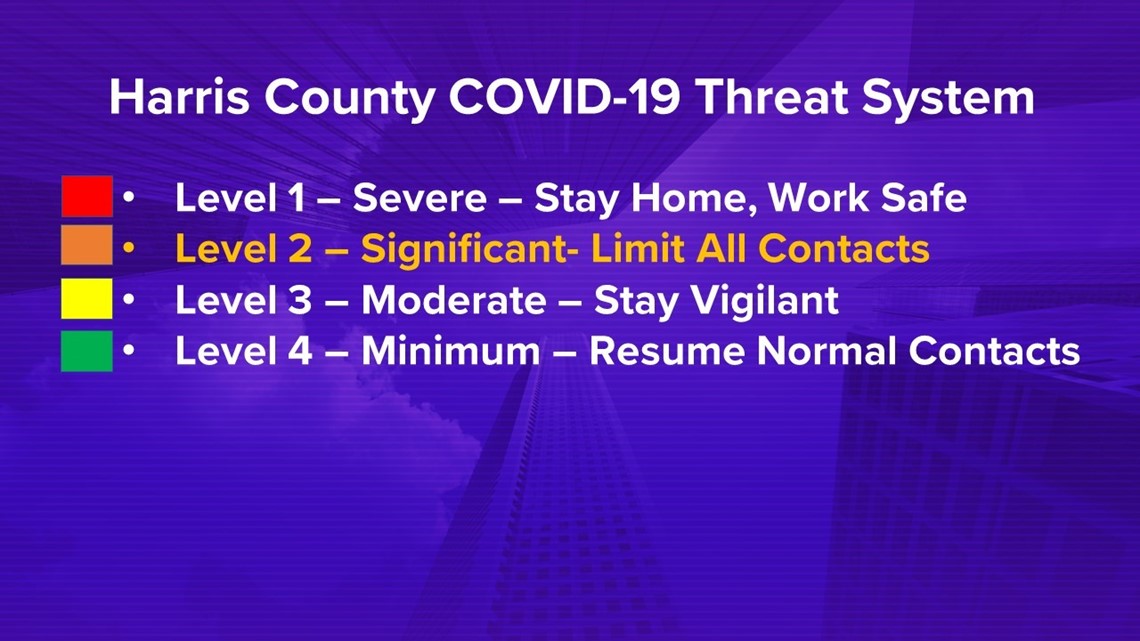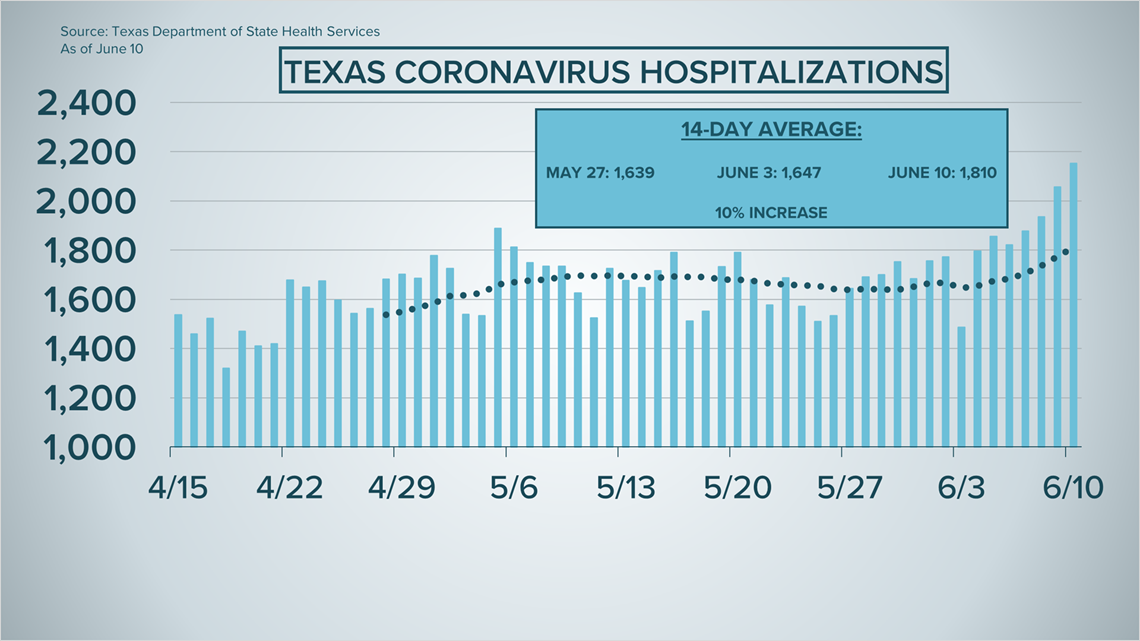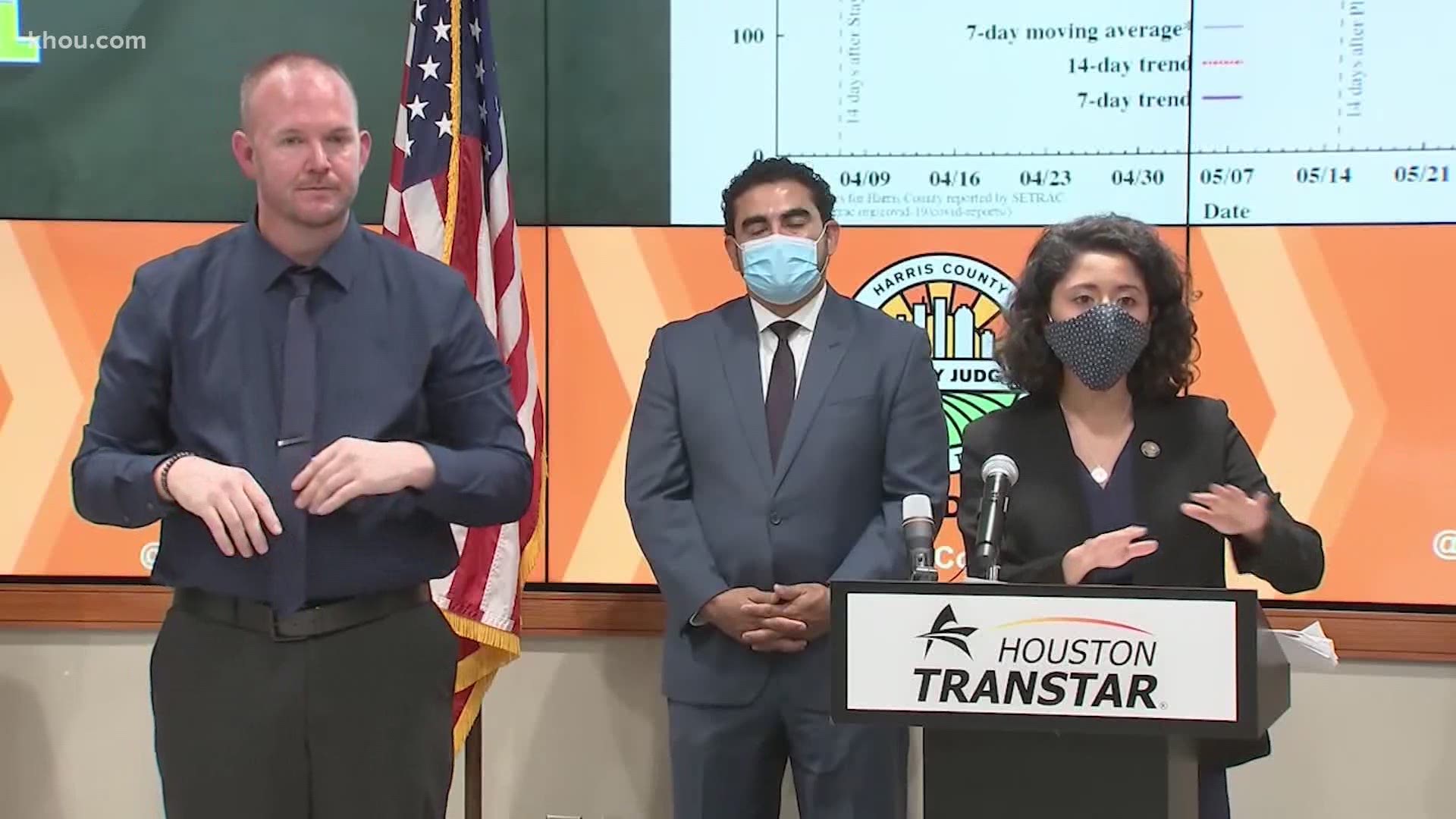HOUSTON — Harris County Judge Lina Hildago and Mayor Sylvester Turner shared details Thursday about the new coronavirus "public threat level system."
Hidalgo said the system is designed to help residents better understand the status of coronavirus in the area and what actions they need to take to help maintain the spread of the virus.
“We still have a long road ahead of us to end this epidemic, and we have to accept that life as usual probably won’t be returning anytime soon. The only way out of this crisis is for the community to work together," Hidalgo said.
The system measures coronavirus threat on a numerical scale with Level 1/red representing the highest threat and Level 4/green being the lowest threat.


Hildalgo said we're currently at Level 2/orange, which means there is a significant threat and virus spread is uncontrolled despite state and local health efforts. It's advised residents have minimal contact with others.
Level 3/yellow represents a moderate but controlled threat.
The county said should the scale reach a Level 1 threat, it would mean the Houston area is experiencing an outbreak and it's worsening. Residents would be asked to stay home and minimize contact with others.
Hidalgo added the system is a long-term solution for monitoring the coronavirus that will outlast any federal, state or local executive orders.
Houston would need to flatten the curve or there would have to be a significant trend in coronavirus cases or COVID-related hospitalizations decreasing over a 14 day period for the threat to drop to a Level 3, Hidalgo said.
The judge said Houston has continued to have rising coronavirus case numbers for the past two weeks.
"It was highest on Monday, and it's getting worse every day," Hildago said.
Hidalgo said Houston has plenty of ICU hospital beds at the moment, but if trends continue to move upward, the county and city are prepared to use the emergency hospital resources at NRG Stadium.
Turner and Hildago both emphasized it's just as important as ever that residents continue wearing masks, practicing social distancing and avoid gatherings of large people.
You can view the public threat level system here on the Ready Harris website.
Coronavirus cases and hospitalizations around Houston and the rest of Texas are on the rise, reaching record highs following the state's partial reopening in late May. There are also concerns about what impacts the recent protests will have, when newer case numbers start to come in.
Harris County and Houston's "stay home" order officially expired at midnight on Wednesday, June 10. Judge Hidalgo has not yet said if a new or similar order would replace it.
Last month, the city and county put into place dozens of testing sites as well as hundreds of contact tracers. Contact tracing is a process that tracks where a positive person has been and who they’ve been in contact with. Contact tracers then reach out to everyone that person has contacted and steps they need to take.
For the third straight day, Texas sees record-number of COVID-19 hospitalizations
Three months after the first Houston-area coronavirus case, several health experts warned the recent trend of new infections and hospitalizations is not looking good.


“Pretty much all the numbers are moving in the wrong direction at this point,” Dr. David Persse, director of the Houston Health Department, told KHOU 11's Jeremy Rogalski on Tuesday.
“We’ve seen an array of numbers that are all unfortunately going in the wrong direction,” said President and CEO Dr. Marc Boom.
Daily COVID-19 hospitalizations in the Houston trauma service area hit back-to-back record highs Monday and Tuesday, with 614 and 622 cases, respectively, according to the Texas Department of State Health Services.
Texas is currently operating under Phase III of its reopening plan, which was announced June 3rd:
All businesses currently operating at 25% capacity can expand their occupancy to 50% with certain exceptions.
Bars and similar establishments may increase their capacity to 50% as long as patrons are seated.
Amusement parks and carnivals in counties with less than 1,000 confirmed positive cases may open at 50% capacity.
Restaurants may expand their maximum table size from 6 to 10 persons.
Effective June 12:
Restaurants may expand their occupancy levels to 75%.
Counties with 10 or less active COVID-19 cases may expand their occupancy limits to 75%. Counties that fit this category but have not previously filed an attestation with DSHS will need to do so.
Effective June 19:
Amusement parks and carnivals in counties with more than 1,000 confirmed positive cases of COVID-19 may open at 50% capacity.
Additional Openings:
Special provisions have been made for outdoor gatherings, such as Fourth of July celebrations, but it is imperative that local officials and public health officials collaborate on safe standards. These provisions are included in the Governor's Executive Order and are also available on the Open Texas webpage.
Further Protocols:
All businesses should continue to follow the minimum standard health protocols from DSHS. For details and a full list of guidelines, openings, and relevant dates, visit http://open.texas.gov.
Reminders for those going out:
- Individuals are encouraged to wear appropriate face coverings.
- People should not be in groups greater than ten when possible.
- People over the age of 65 are encouraged to stay at home as much as possible.
- People are still asked to avoid nursing homes, state supported living centers, assisted living facilities, or long-term care facilities.

